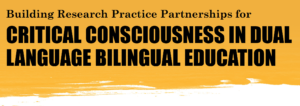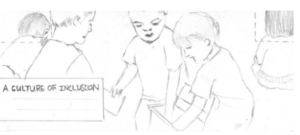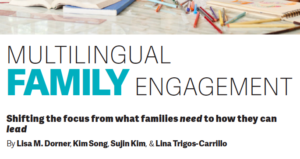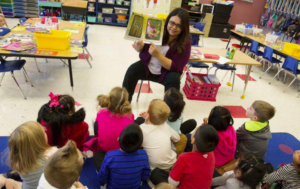
Do you work in a dual language program that serves bilingual and bicultural students? Are you interested in developing more equitable programs and enhancing educational opportunities at your school?
Building Raciolinguistic Justice in Midwestern Dual Language Programs through Research-Practice Partnerships is a year-long project supported by the Spencer Foundation; coordinated by me, Trish Morita-Mullaney, Deborah Palmer, and Amy Young; and implemented in partnership with many other bilingual educators and scholars. The project is designed to enhance and develop critical consciousness in dual language bilingual education (DLBE) in the US Midwest.
What is DLBE and why is critical consciousness important for it? Dual language bilingual education is a unique educational approach where teachers provide content instruction in English and another language, aiming to develop bilingualism, biliteracy, and biculturalism for a diverse student body. Yet despite the fact most programs integrate and serve students from various backgrounds, DLBE continues to face persistent challenges with equity, especially for students of color and youth who speak languages other than English (see here). This is true in all program models regardless of the label (one-way, two-way, 90/10, 50/50, etc.). In turn, we must build critical consciousness, that is, processes to study such inequities and take action to disrupt them.
The project has three main goals:
- Document and more deeply understand how Midwestern DLBE programs serve diverse students, especially children of color from bilingual and bicultural homes.
- Develop research-practice partnerships and new research agendas for understanding and addressing equity challenges through critical consciousness.
- Foster a community of practice and network of researchers and practitioners to build antiracist, equitable DLBE programs across the region.
We invite DLBE educators to join our webinar series this June! Partnering with the Cambio Center and CARLA, these four webinars will develop an understanding of DLBE challenges and opportunities across Midwestern DLBE programs. The webinars are organized around four actions that enhance critical consciousness:
- Historicizing Dual Language Communities and Ourselves—Tuesday, June 14
Learn about deconstructing mainstream explanations of the past and foregrounding individuals’ and communities’ local histories. - Critical Listening in Dual Language Education—Thursday, June 16
Explore ways of engaging students, educators, and families with others for meaningful and transformative connection through developing curiosity and attention, sharing, caring, reciprocity, and responsivity. - Embracing Discomfort in Dual Language Spaces—Tuesday, June 21
Experience and learn from the inevitable unsettled feelings one might have in recognizing, reflecting on, and acting against the ways in which our own privilege, sense of entitlement, or silence reify and reproduce social injustice. - Interrogating Power to Develop Equity in Dual Language Programs—Thursday, June 23
Examine ways of calling out oppression, and working to push those in power to take note of injustice and to transform systems.
All webinars will take place on Zoom from 4–5:30 p.m. (Central Time).
For More Information




